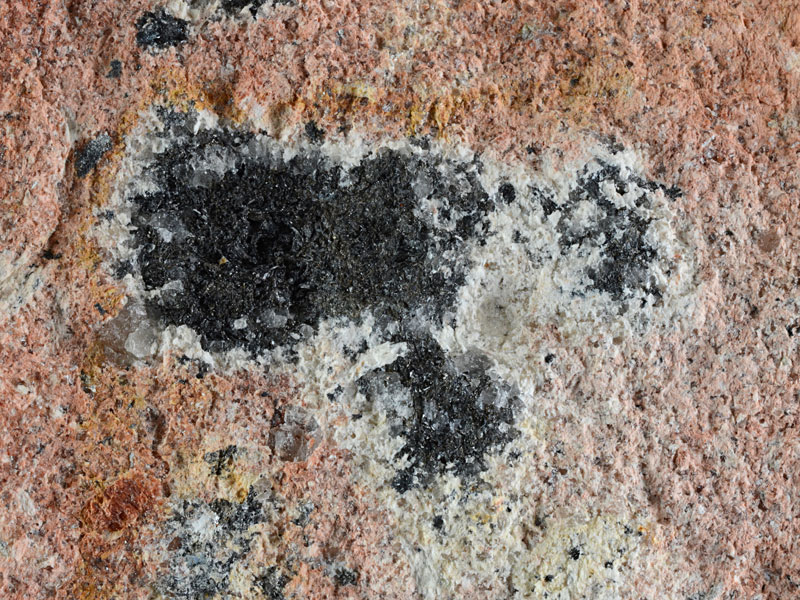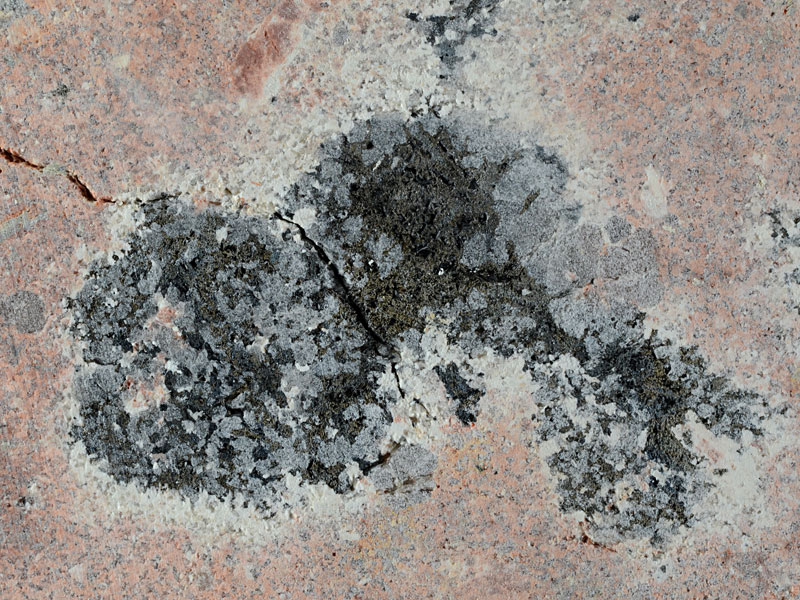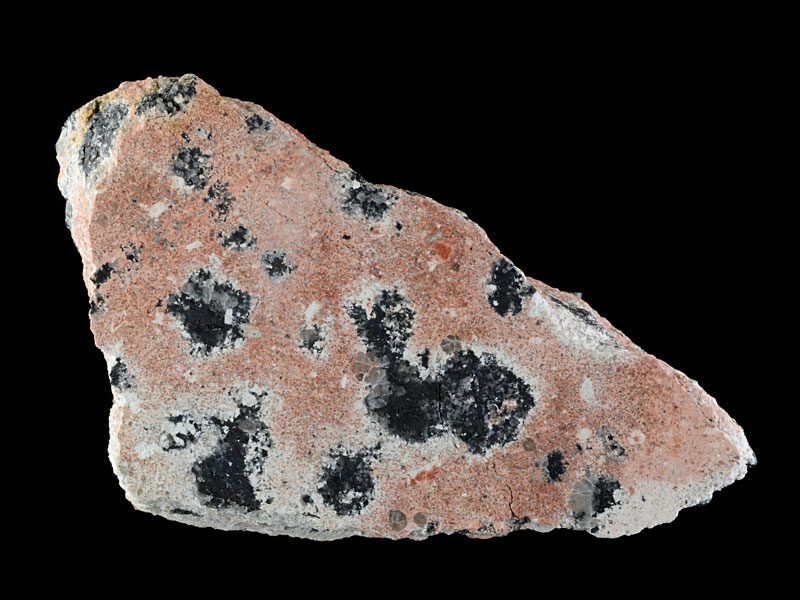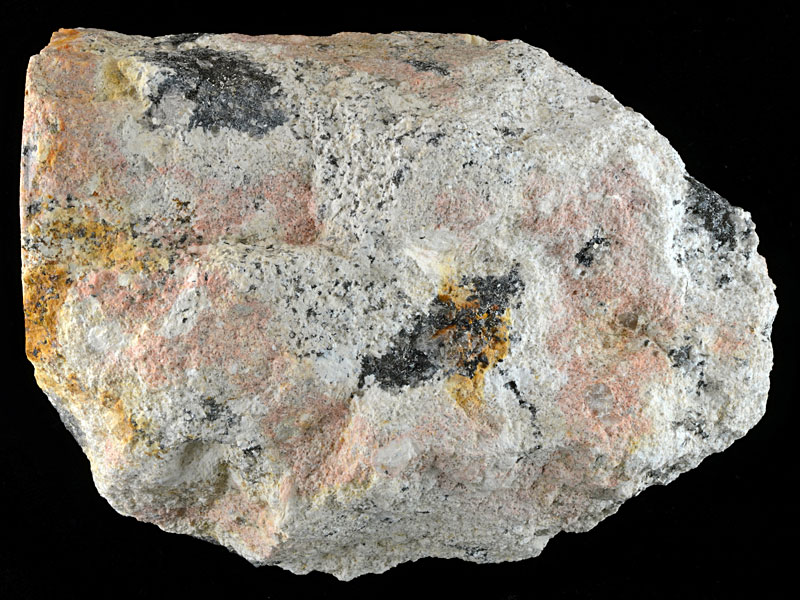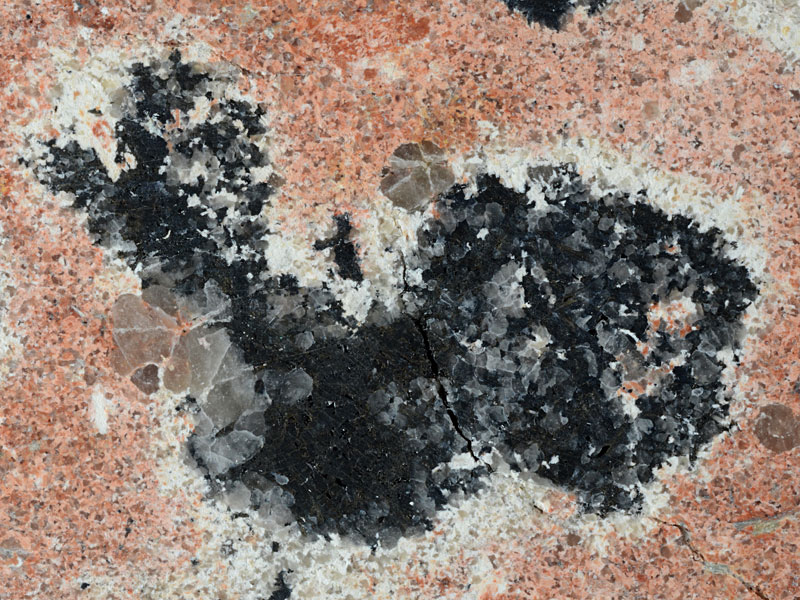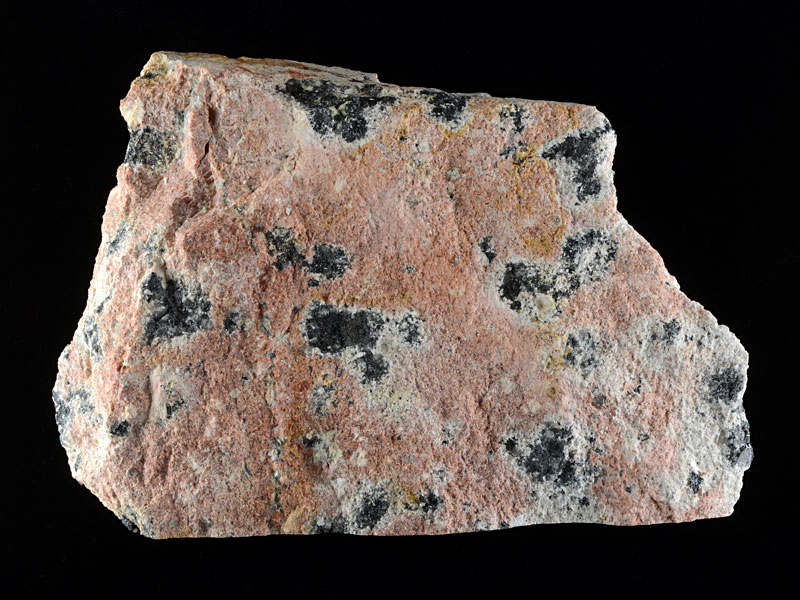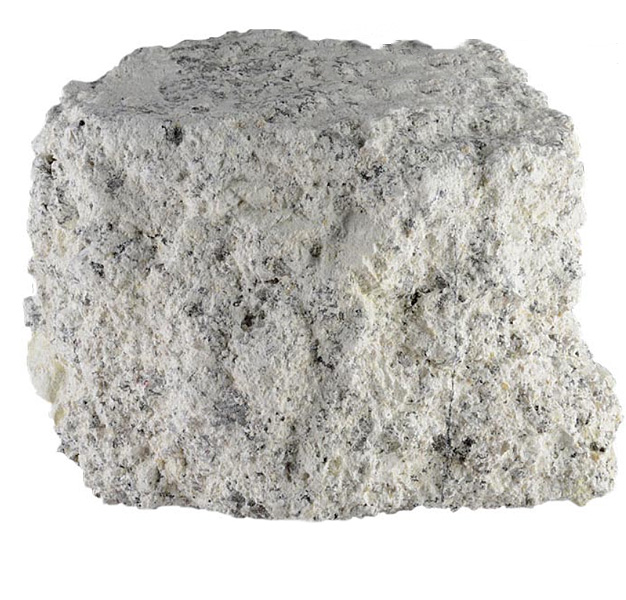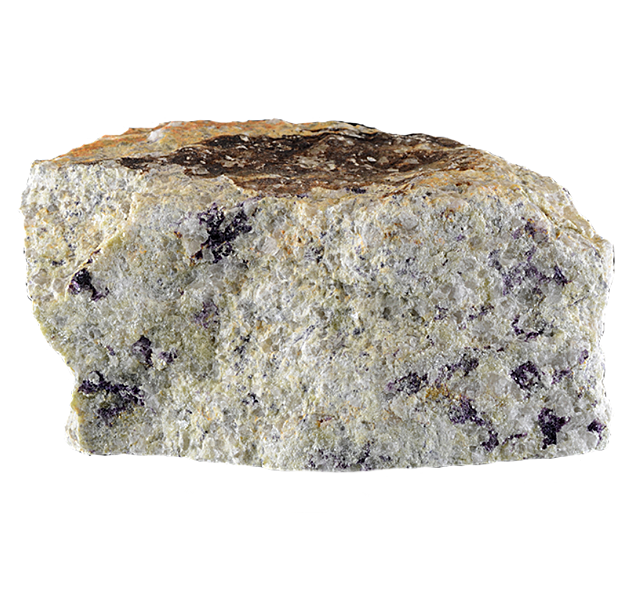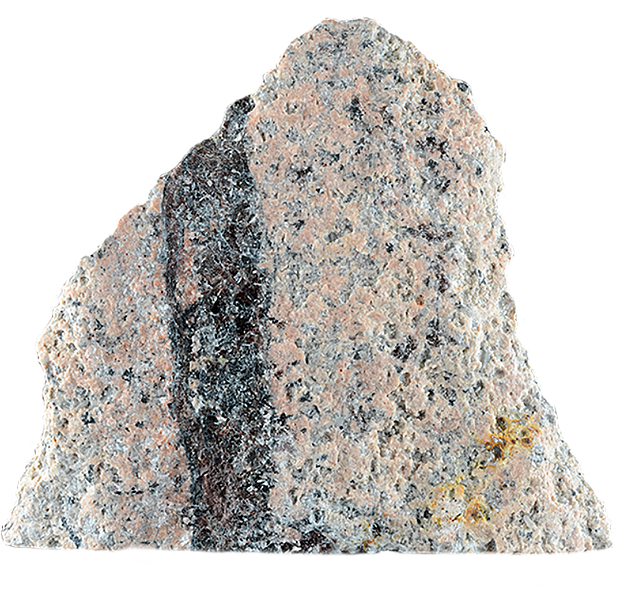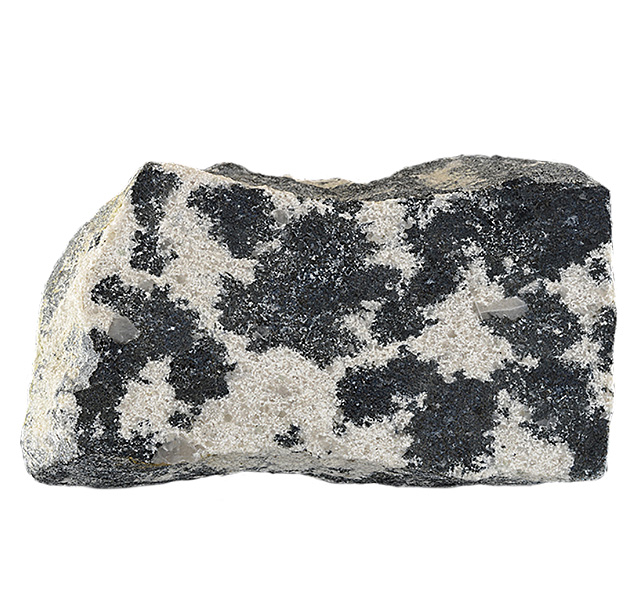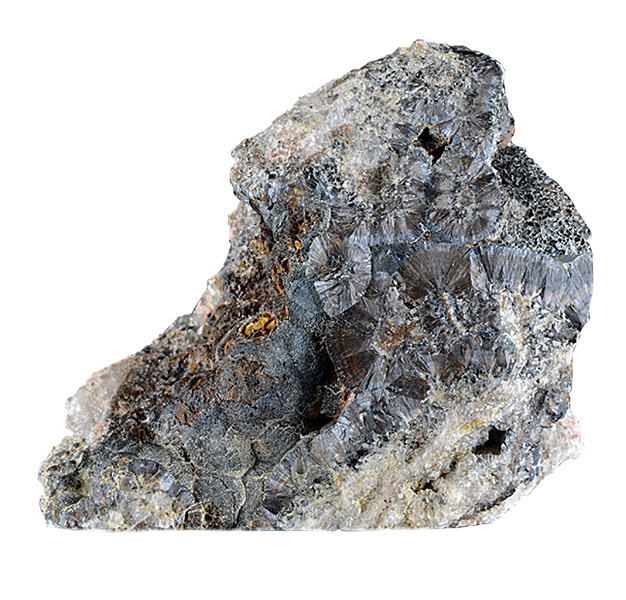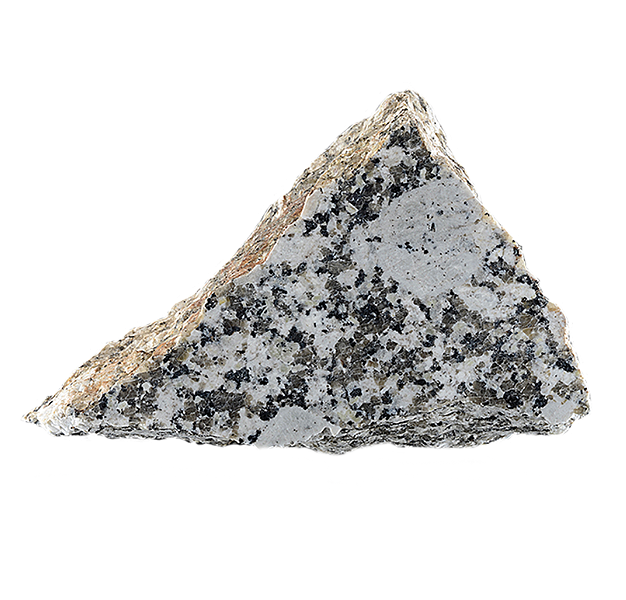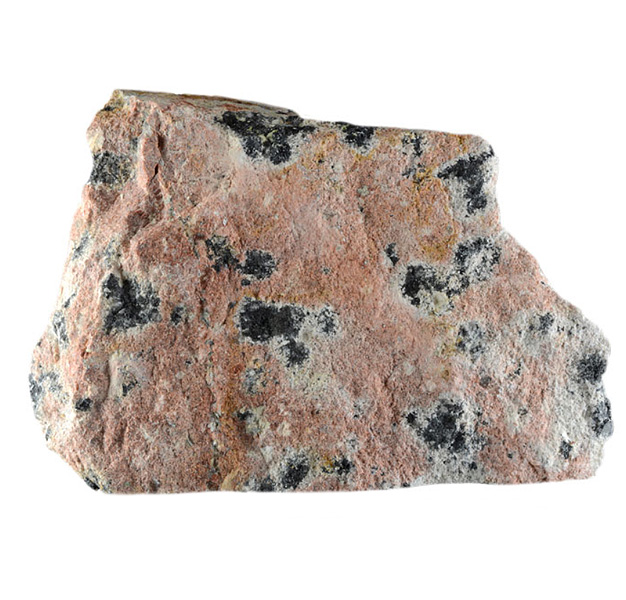
Fact sheet
This sample provides a good illustration of trapped volatiles in a granitic magma. At the very end of the magmatic cycle boron-rich volatiles become concentrated and here they have been preserved in the form of tourmaline "balls" - each representing a bubble of volatiles. See how the volatiles have leached the colour from the surrounding aplite - this represents a solid state migration of elements into and out of the "balls". The rock is an aplite that intruded earlier granite (from the first phase of igneous activity in this region).
In thin section note fine grain size of the matrix, the considerable alteration of feldspar and the pools of tourmaline mantled by quartz.
A case study of the St Austell granite complex in Cornwall, England, illustrating the range of rocks associated with a granite intrusion. The earliest part of the complex is a siderophyllite (biotite) granite containing muscovite and tourmaline typical of a SW England granite, with many primary magmatic features.
This early intrusion was followed by the intrusion of an evolved volatile-rich magma which was the driving force behind a series of intense hydrothermal processes as volatiles escaped from this magma and helped to establish an extensive alteration halo (aureole). Boron, fluorine and lithium (as well as water) played major roles in the formation of the second intrusion and in the associated hydrothermal processes. Igneous activity lasted around 18 million years from 282 Ma (siderophyllite granite) to 265 Ma (fluorite granite).
